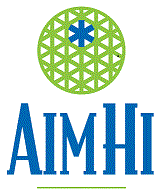By Mihir Zaveri
July 29, 2018
https://www.nytimes.com/2018/07/29/us/black-woman-ambulance-cost-florida.html
Nicole Black got a call around 1:45 a.m. on July 4 that her daughter Crystle Galloway had fallen in the bathroom of her Tampa, Fla., condominium and that something was wrong.
She had hit her head, Ms. Galloway’s daughter said, and by the time Ms. Black raced from her home two blocks away, she was slumped over the bathtub, foaming at the mouth and her lips were swollen.
Ms. Black called 911. Later that day, Ms. Galloway slipped into a coma. She died five days after.
But weeks later, questions persist about what happened after the 911 call and whether race played a role in how Ms. Black and her daughter were treated. Four emergency medical workers have been placed on paid leave and face a disciplinary hearing on Tuesday.
Ms. Black said that the responders told her she could not afford the $600 ambulance ride to take her daughter to the hospital, and that she was directed by the medics to drive her there on her own. Ms. Black said she believed her family was treated poorly because they are black.
Officials in Hillsborough County, which provided the emergency medical response, disputed her account, denied that race played a role and said Ms. Black herself said she wanted to take her daughter to the hospital.
But officials acknowledged other troubling issues: Nobody took Ms. Galloway’s vitals at the scene; responders failed to get a signed confirmation from Ms. Black that her daughter wouldn’t use the ambulance; and, in a follow-up report, medical workers indicated that they had not arrived at the scene at all that morning.
Mike Merrill, the county administrator, put all four medical workers on paid leave.
Ms. Black on Saturday would not disclose specific medical information about her daughter, but she said she did not believe she would have died if the responders had acted differently.
“I’m devastated,” Ms. Black said. “I feel like my chest has been ripped open.”
At a news conference last week, Mr. Merrill said he deeply regretted “that this has happened, and clearly this is unacceptable.”
“My deepest sympathies to the family, and my deepest apologies for my fire medics not properly performing and caring for this patient,” he said.
On June 27, Ms. Galloway had a cesarean section, giving birth to a boy. Recent news reports have highlighted the high rates of maternal mortalityamong black women. Nationally, they are three to four times as likely to die in pregnancy or childbirth as white women, according to the Centers for Disease Control and Prevention.
Mr. Merrill said on Saturday that he had not received any information that would indicate that race was a factor influencing the medical workers’ actions, or that if they had acted differently, Ms. Galloway would have survived.
The county identified the emergency medical workers as John Morris, 36, a lieutenant; Justin Sweeney, 36, and Andrew Martin, 28, both fire medics; and Cortney Barton, 38, an acting lieutenant. They could not be reached for comment.
In statements released by the county, the responders described helping Ms. Galloway down the stairs of her home and placing her into Ms. Black’s car, but they denied refusing to take her.
“By the time we realized that no information was obtained, the mother had already left the scene,” Lieutenant Morris wrote.
He said that Ms. Black was “adamant” she would take her daughter to the emergency room and that “at no point would I advise against a person being transported by our rescue.”
Derrik Ryan, president of Hillsborough County Firefighters Local 2294, said Ms. Black’s description of what happened was “not factual.” He said that the medical workers did not “talk her out of going to the hospital” and that they did not talk about the cost of the ambulance trip.
Mr. Ryan called the assertion that race played a role in their interactions “totally ridiculous.”
He acknowledged that the medical workers failed to get Ms. Galloway’s vitals and should have gotten Ms. Black to sign a document stating that they would not be taking Ms. Galloway to the hospital. He said that a medical worker mistakenly entered into a report that they didn’t reach Ms. Galloway.
“Did we make minor mistakes on that call? Absolutely,” Mr. Ryan said. “We did not kill that lady and we did not refuse to transport that lady.”
Mr. Merrill said two Hillsborough County sheriff’s deputies who also responded that night had some discussion with Ms. Black about the cost of transporting her daughter to the hospital.
In a statement, a sheriff’s office spokesman said Ms. Black had asked one of the deputies if emergency medical workers would take Ms. Galloway to the hospital and if she would have to pay for the transport. According to the statement, the deputy responded affirmatively to both questions but did not further discuss the ambulance or its cost with Ms. Black.
After Ms. Black filed a complaint, the sheriff’s office conducted a review and “determined no violations of agency policy or standards occurred,” the statement read.

